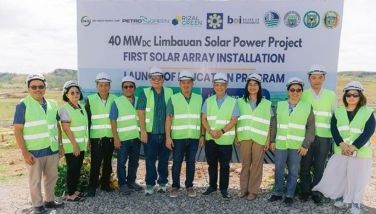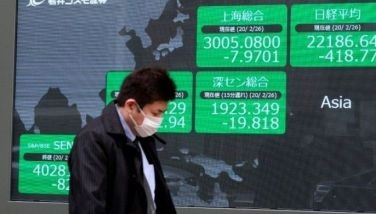A middleman’s business

Lito retired as a family driver some years ago, and with a tidy sum received for his years of service, he went back to his rural roots to live out his senior years by planting vegetables and raising livestock and poultry for food.
It’s not a easy life, he realized, as he watches carefully how he spends his dwindling savings. Still, he feels better off than friends he spent his youth with, but who stayed on in his hometown to become full-time farmers. It’s an old story he hears from them, of deprived incomes over decades that have pushed them further into poverty.
Traditional Filipino farmers continue to reel from low farmgate prices, often dictated by middlemen who lend money and other planting implements before the start of the planting season in exchange for first dibs of all their produce.
There’s a sort of gentleman’s agreement amongst middlemen who operate in certain areas. More sinister, though, is how they uniformly dictate the price of farmers’ produce – and how much they sell to wet market vendors. It’s a system that’s been honed over time.
Filling in a need
Middlemen operate under the radar; nothing flashy or obtrusive. What they do is a matter of business: if a farmer does not wish to borrow from him, so let it be. Their main concern is to bring the produce to market at the most efficient way, thereby maximizing on their profits.
The middleman has to factor in a number of risks. The weather may turn bad at any time of the planting period, which means he won’t immediately be able to collect on the money and resources frontloaded to a farmer. Worse, he will not have anything to sell.
Aside from taking care of transporting goods, including factoring in for fuel price increases, there is the risk of having to allot extra money for road “tolls,” or those manned by uniformed men in motorbikes or cars that bear government plates.
When business is slow, when there is not enough produce of tomatoes, for example, to meet market demand, the middleman has to keep his earnings at sustainable levels, not just to recoup his expenses, but also to be able to set aside enough money to finance the next planting cycle.
Middlemen may earn much more than what a farmer does, but he is not organized crime. What he has seized upon is an opportunity to earn a living, which started because only he was willing to take a risk by lending to a farmer who needs to till his soil, but cannot turn to others for credit to start working on his land.
Flawed laws
Lito’s storytelling, repeated from his childhood friends, is all too often written in scholarly researches that attempt to shed light on the dire conditions that Filipino farmers find themselves in. Such findings should provide guidance to policy makers and lawmakers in coming up with better strategies to save Philippine agriculture.
Unfortunately, even the best of intentions of our country’s bureaucrats and elected officials is not enough if laws and their implementing guidelines are flawed to begin with.
Who can forget the bungled-up omnibus Agricultural Fisheries and Modernization Act of 1997? The law was intended to provide safety nets to protect Philippine agriculture from global trade liberalization initiatives, but instead failed dismally as imports of agricultural products increased year after year while the contribution of agriculture to the national economy dwindled to its lowest.
In a mad scramble to save the day, concerned lawmakers have been trying to come up with patching reforms focused on specific sectors. The Rice Tariffication Law of 2019 (RTL) is one that attempts to resuscitate our rice-producing sector over a period of six years. The Coconut Farmers and Industry Trust Fund Act of 2021 or Republic Act 11524, on the other hand, calls for a five-year fund disbursement period.
Such legislative actions stipulate a specific amount of money spent over a defined number of years for precise purposes, i.e., distribution of better seeds and farm tools, credit programs, plus incentives, and mechanisms for farmers to form cooperatives, among others.
How these focused interventions will play out is still very much debatable. More importantly, will they be able to institutionalize the needed reforms that will sustain the sectors when the government puts a stop on the stipulated funds?
Struggling Sagip Saka
One of the more encompassing laws that purport to resuscitate Philippine agriculture is the Sagip Saka Act of 2019, which perhaps continues to receive media attention because it is often mentioned by a famous lawmaker running in the May elections.
Senator Francis Pangilinan, who is eyeing a vice-presidential mandate, is the law’s principal author, and as such, harbors a more personal interest in seeing the law implemented to its fullest. During the last two years from the law’s passage, though, coaxing various government agencies to come up with the relevant implementing rules and regulations has become a major effort.
Sagip Saka gives local governments and selected government agencies the funds to buy directly from farmers for their food distribution programs, and which supposedly eliminates the role of middlemen. That sounds fine and dandy, as long as farmers are freed from their reliance on the middlemen’s credit.
This law deserves a second look two or three years from now to gauge its success or failure. Until then, for the sake of our farmers, we hope for the best.
Facebook and Twitter
We are actively using two social networking websites to reach out more often and even interact with and engage our readers, friends, and colleagues in the various areas of interest that I tackle in my column. Please like us on www.facebook.com/ReyGamboa and follow us on www.twitter.com/ReyGamboa.
Should you wish to share any insights, write me at Link Edge, 25th Floor, 139 Corporate Center, Valero Street, Salcedo Village, 1227 Makati City. Or e-mail me at reydgamboa@yahoo.com. For a compilation of previous articles, visit www.BizlinksPhilippines.net.
- Latest
- Trending






























